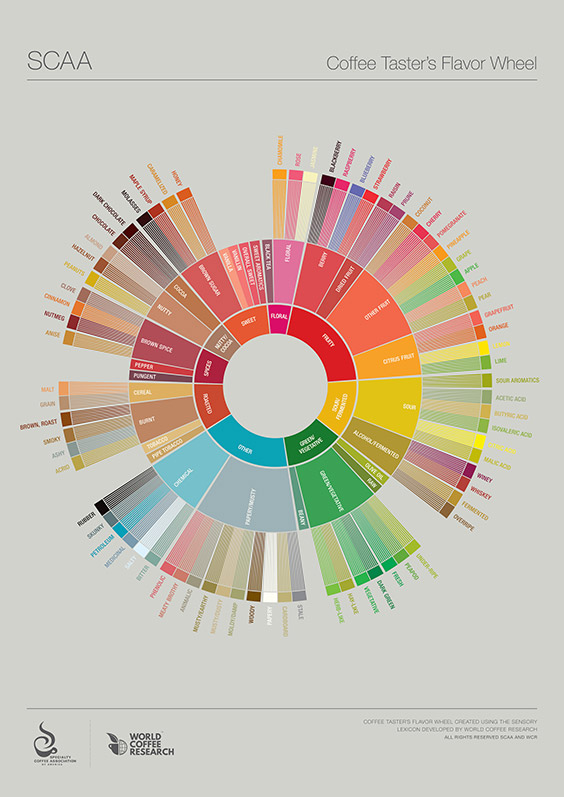You may have heard the term “cupping” being thrown around by coffee professionals, but what exactly does it mean?
At it’s simplest, cupping is a way to taste, evaluate, and compare the flavor, quality, and potential of a given coffee. As roasters, it’s important for sourcing coffees, developing roast profiles, maintaining consistency and quality control, and for educating and training.
It’s a relatively complex process, more akin to an objective scientific experiment than to the process of brewing coffee for consumption. Generally speaking, most customers have no real reason to cup coffee. This is because every specialty grade coffee that makes it to your mug has been cupped dozens of times by producers, exporters, importers, coffee buyers, and roasters – ensuring that the coffee meets specific quality and flavor standards.
We, however, like to encourage our customers to try to cup coffees because
1. It’s fun! It’s one of our favorite weekly tasks in the roastery and,
2. It’s an excellent way to build your coffee vocabulary and develop and enhance your palate. Ever see tasting notes like “blueberry” or “toasted marshmallow” on a bag of coffee and fail to taste it in your brew? Cupping is the best way to train your palate to differentiate between such tasting notes
Things You’ll Need
- A clean, well lit environment free of other odors, noise, and distractions
- Freshly roasted coffee
- Clean, filtered water heated to 200F
- A Burr Grinder
- Cups (of the same size and weight – SCAA recommends 5oz glasses)
- Spoons (at least two per person)
- A scale
- A Timer
- Note taking equipment (pen and paper or the Angel’s Cup app)
- A focused mental attitude
Basic Etiquette
- No distractions
- No odors like perfume, aftershave, lotion, body odor, cigarette smoke, etc.
- Not immediately after eating, drinking, or brushing teeth/chewing gum
- Try to cup 2-3 hours after waking up in the morning when your senses are most alert
- No talking during cupping so as not to influence other cuppers
- Most importantly – BE CONSISTENT CUP TO CUP. Consistency is key in any experiment!
SCAA CUPPING RATIO:
8.25g of coffee to 150 mL of water
*grind should be slightly coarser than a grind for paper filter (we use the same grind as a Chemex)
How To Cup
- Weigh coffee as whole beans in cups
- Grind each of the coffees. If cupping multiple coffees, be sure to purge grinder with a small amount of coffee in between samples
- Evaluate dry fragrance and take notes
- Pour SCAA Standard water (heated to 200F) in each of the cups as you start a timer. Ensure each cup has the same amount of water.
- After 4 minutes, break the crust to evaluate wet aroma. Do this by partially inserting your spoon in the crust of coffee that has formed, and push them back while smelling. Repeat for a total of three times for each coffee. Be sure to do this in the same order you poured water onto the grounds.
- Use two spoons to skim off the grounds, foam, and oils.
- After another 4 minutes, taste the coffee. Fill your spoon, slurp the coffee, and aspirate over your tongue to taste. Take notes.
- After another 4-5 minutes, repeat step 7.
- Wait another 4-5 minutes and taste a third time for final impressions.
- If cupping with others, share your notes!
Evaluating Flavor
We like to use the SCAA Flavor Wheel while we cup. The first tier of the wheel is general flavors, the second tier is umbrella terms, and the last tier is specific descriptions. It’s best to start from the middle and go outward.
Tasting something fruity? Start there. If you can, then try to discern whether it’s a berry or citrus or other fruity note your tasting. Citrus? Great, now we can try to figure out which citrus we’re tasting. This process is the best way to build your vocabulary and train your palate without getting overwhelmed.
Be sure to take as many notes through the cupping process as possible and never second guess yourself. There are no wrong answers – everyone experiences taste and smell differently so don’t be embarrassed to compare notes with others.
Parting Thoughts
Like most things in life, practice makes perfect. You’ll only get better and better at pinpointing specific flavors the more you cup and get comfortable with using the flavor wheel. Eventually, with some practice, you’ll have the palate of a coffee professional, so be sure to cup as often as you can! Besides – there are worse ways to spend time than tasting coffee.
For a more in depth cupping tutorial, check out this awesome video by Cafe Imports:
If you’re interested in cupping coffees and do not have the tools or resources to do so, feel free to get in touch with us through email, Facebook, or Instagram. We would be happy to set up a cupping with you.



